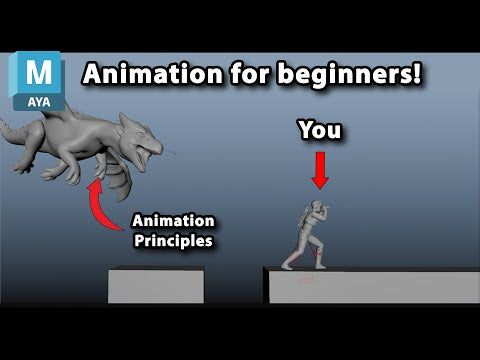Your Cart is Empty
Customer Testimonials
-
"Great customer service. The folks at Novedge were super helpful in navigating a somewhat complicated order including software upgrades and serial numbers in various stages of inactivity. They were friendly and helpful throughout the process.."
Ruben Ruckmark
"Quick & very helpful. We have been using Novedge for years and are very happy with their quick service when we need to make a purchase and excellent support resolving any issues."
Will Woodson
"Scott is the best. He reminds me about subscriptions dates, guides me in the correct direction for updates. He always responds promptly to me. He is literally the reason I continue to work with Novedge and will do so in the future."
Edward Mchugh
"Calvin Lok is “the man”. After my purchase of Sketchup 2021, he called me and provided step-by-step instructions to ease me through difficulties I was having with the setup of my new software."
Mike Borzage
Parametric Design in Architecture: Unlocking Innovation, Efficiency, and Sustainability Through Advanced Computational Tools
August 13, 2024 5 min read


Understanding Parametric Design
Parametric design is a modern approach to architecture that leverages algorithms and parameters to generate complex and adaptive structures. At its core, parametric design involves the use of mathematical equations and rules to establish relationships between different design elements. These relationships enable architects to create dynamic and responsive models that can be easily adjusted by modifying the underlying parameters.
The principles of parametricism, a term coined by architect Patrik Schumacher, emphasize the importance of variability, adaptability, and the seamless integration of design components. This approach allows for the creation of fluid and organic forms that evolve from the interplay of multiple variables, resulting in innovative and visually striking architectural features.
Historically, parametric design has its roots in the advancements of computational design tools during the late 20th and early 21st centuries. Early experiments with computer-aided design (CAD) laid the groundwork for the development of more sophisticated parametric tools. Key milestones in the evolution of parametric design include the introduction of software such as Rhino and Grasshopper, which revolutionized how architects conceptualize and manipulate complex geometries.
Parametric design relies on several basic components, including parameters, algorithms, and computational tools. Parameters are the adjustable inputs that define the properties of a design, such as dimensions, angles, and material properties. Algorithms are the logical procedures that process these parameters to generate the design output. Commonly used software in parametric design includes:
- Rhino: A versatile 3D modeling tool known for its precision and flexibility.
- Grasshopper: A visual programming language integrated with Rhino, enabling designers to create and manipulate parametric models.
- Autodesk Revit: A BIM (Building Information Modeling) software that supports parametric design through its family editor and adaptive components.
Advantages of Parametric Design in Architecture
Parametric design offers numerous advantages that enhance the architectural design process and final outcomes. One of the most significant benefits is the ability to create unique, custom-tailored designs. By adjusting a few parameters, architects can generate a wide variety of design iterations, each with distinct characteristics. This level of customization allows for the creation of bespoke solutions that cater to specific client needs and site conditions.
The flexibility of parametric design also enables swift changes and iterations. Traditional design methods often require extensive manual adjustments to accommodate changes, but parametric models can be quickly updated by modifying the underlying parameters. This capability is particularly valuable during the conceptual and schematic design phases, where rapid prototyping and testing of different design options are essential.
In terms of efficiency and optimization, parametric design can lead to significant time and cost savings through automation. Automated processes reduce the need for repetitive tasks, allowing architects to focus on creative problem-solving. Additionally, parametric design facilitates material and structural optimization, contributing to more sustainable architectural solutions. By analyzing and simulating various design alternatives, architects can identify the most efficient use of materials, minimize waste, and enhance the overall environmental performance of buildings.
The innovative and creative potential of parametric design cannot be overstated. This approach unlocks new forms and aesthetics that are challenging to achieve with traditional methods. The ability to explore complex geometries and fluid shapes opens up a world of possibilities for architectural expression. Groundbreaking designs that push the boundaries of conventional architecture are increasingly becoming a reality thanks to parametric design tools.
Challenges and Limitations
Despite its numerous benefits, parametric design also presents certain challenges and limitations. One of the primary issues is the complexity and steep learning curve associated with mastering parametric tools. Architects must invest considerable time and resources in training to become proficient in software like Rhino, Grasshopper, and Revit. The initial investment in both software and training can be substantial, posing a barrier to entry for some practices.
Managing and modifying large parametric models can be complex and time-consuming. As models increase in size and complexity, they can become difficult to navigate and manipulate. This complexity requires a high degree of organization and attention to detail, as small errors in the parameters or algorithms can lead to significant issues in the final design.
Effective interdisciplinary collaboration is another challenge in parametric design. Architectural projects often involve a diverse team of professionals, including architects, engineers, and construction specialists. Ensuring smooth communication and collaboration between these stakeholders is crucial for the success of parametric projects. However, integrating parametric design tools with other design and construction software can be problematic, leading to potential coordination issues and inefficiencies.
Computational limits also pose a challenge for parametric design. Very large or complex models can strain even the most advanced computational resources, resulting in performance limitations. Architects must balance the computational power required to process intricate parametric models with the practical constraints of hardware and software capabilities. Finding this balance is essential to ensure that the design process remains efficient and effective.
Future Trends and Innovations
The future of parametric design in architecture is poised to be shaped by several emerging trends and innovations. One of the most exciting developments is the integration of parametric design with artificial intelligence (AI) and machine learning. These technologies can enhance predictive modeling and enable architects to generate more intelligent and adaptive designs. By analyzing vast amounts of data, AI can identify patterns and optimize design parameters to achieve better performance and efficiency.
Another promising trend is the use of augmented reality (AR) and virtual reality (VR) in visualizing and modifying parametric designs in real-time. AR and VR tools provide immersive experiences that allow architects and clients to explore design concepts interactively. These technologies can facilitate better decision-making by offering a more intuitive understanding of spatial relationships and design details.
Parametric design is also playing a crucial role in the pursuit of sustainability and the development of smart cities. By leveraging parametric tools, architects can design eco-friendly buildings that optimize energy use, reduce waste, and minimize environmental impact. Parametric design contributes to the creation of smart city infrastructures by enabling the design of adaptable and resilient urban environments. These environments are designed to respond to changing conditions and improve the quality of life for residents.
Enhanced collaboration platforms are set to revolutionize how architectural teams work together on parametric projects. Cloud-based tools allow for seamless collaboration by enabling real-time synchronization and version control. These platforms facilitate teamwork by providing a shared digital space where team members can access, modify, and update parametric models simultaneously. Improved collaboration tools help mitigate the challenges of interdisciplinary coordination and ensure that all stakeholders are aligned throughout the design process.
In conclusion, the future of parametric design in architectural projects is bright, with advancements in technology and methodology paving the way for more innovative, efficient, and sustainable designs. As architects continue to embrace parametric tools and integrate them with emerging technologies, the architectural landscape will undoubtedly evolve, offering new opportunities and challenges along the way.
Also in Design News

Animation for Beginners - Part 2: 12 Animation Principles you NEED to know
January 14, 2025 1 min read
Read More
ZBrush Tip: Enhancing 3D Model Precision with ZBrush's TrimCurve Tool
January 14, 2025 2 min read
Read More
Revit Tip: Utilizing Design Phases to Enhance Revit Project Efficiency and Collaboration
January 14, 2025 1 min read
Read MoreSubscribe
Sign up to get the latest on sales, new releases and more …


